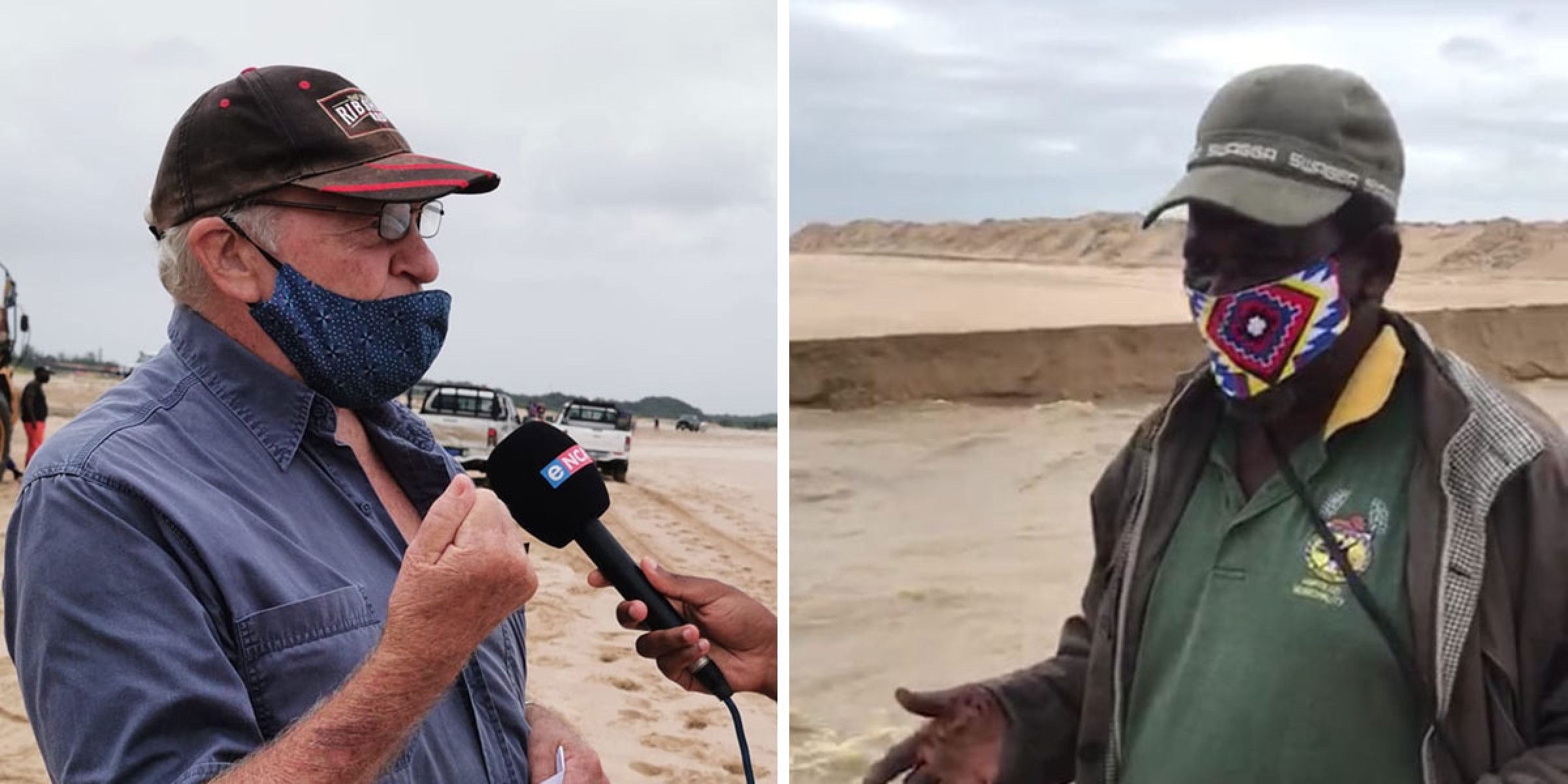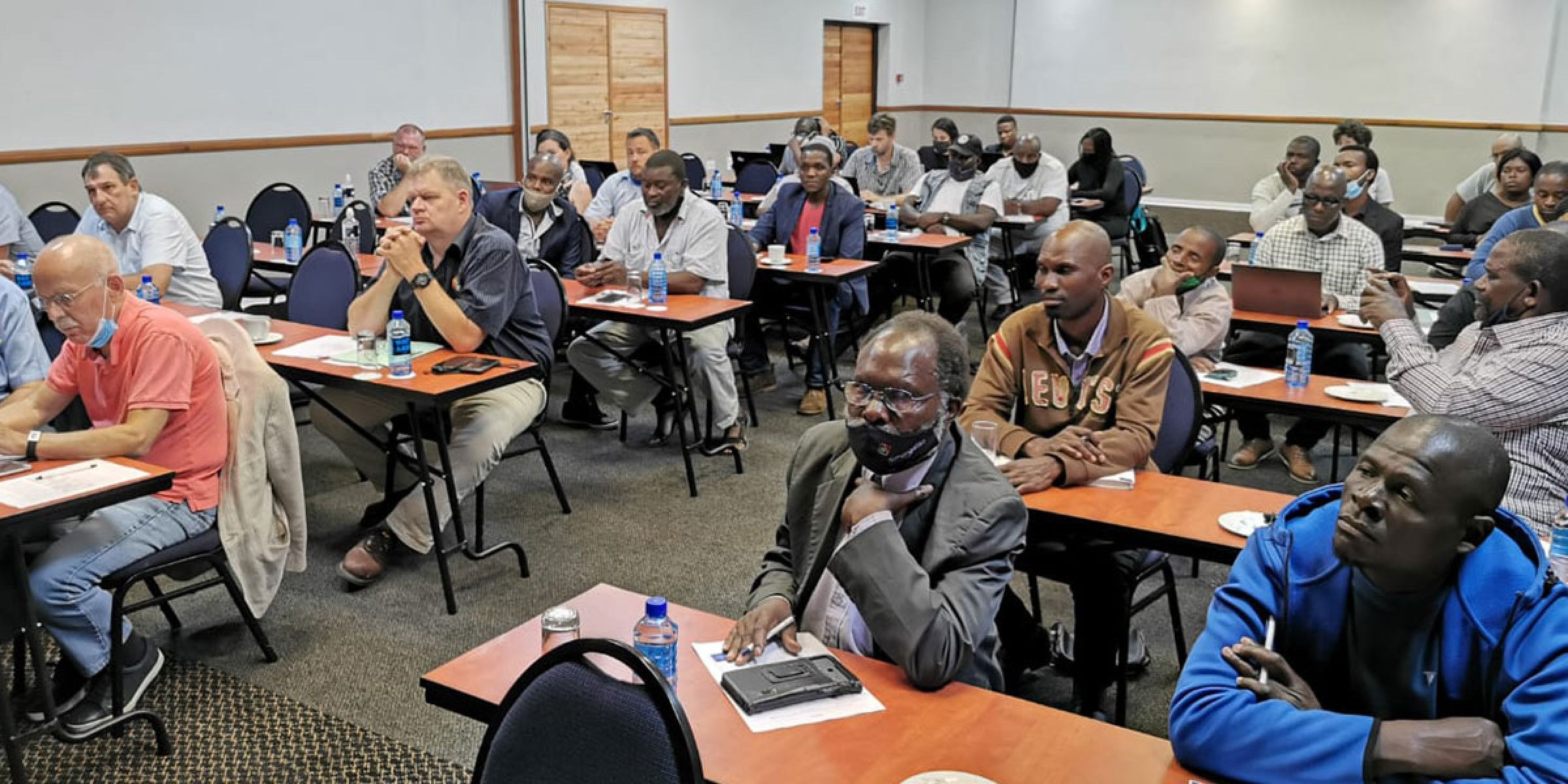
Lake St Lucia mouth connects with the sea again
08 January 2021

The St Lucia Lake has successfully connected with the sea after almost a decade. This comes after the multi-disciplinary and multi-sectoral Task Team recommended to iSimangaliso Wetland Park Authority that the system needs nudging to support natural processes, as part of addressing the ongoing ecological and socio-economic challenges currently being experienced by various sectors. The Task Team represents a wide range of stakeholders, including key scientific experts, tourism operators, conservation managers, NGOs, rural community representatives, fishers, farmers, and business owners.
“Nudging“ of the system has been defined by the Task Team as the immediate short-term solution to mark the beginning of the implementation of an action plan, which seeks to implement short-, medium-, and long-term solutions to the St Lucia estuary problem, which has been ongoing for decades. “Scientific information is used by the Task Team as the foundation for decision-making, based on ecological considerations and the conservation of the biodiversity of the system, but social and economic information also play a critical role” said the Chair of the Task Team, Dr Jean Harris, commenting on the approach of the Task Team. A Scientific Technical Team, comprised of scientists with experience and expert knowledge of the system, took part and provided advice to the integrated Task Team, which also considered the legal and practical aspects of finding a short-term solution.
“We have been waiting for this for so many years, and we wish to thank the management of iSimangaliso Wetland Park Authority for adopting an all-inclusive and adaptive management approach, which has culminated in this successful day”, said Mr Rudi Redinger, member of the St Lucia Rate Payers Association.
Upon visiting the site, and witnessing the flow of water from the lake to the sea, Mr Petros Mlaba (of Sokhulu farmers) commented with a sigh of relief, “this is a dream come true for the Sokhulu community which I represent. For so many years we have been crying and fighting – this means that the livelihoods of the community will improve because we live out of subsistence farming. Our relationship with iSimangaliso has been restored.” Echoing the sentiment of communities, Mr Sibusiso Bukhosini, Chief Executive Officer, expressed his heartfelt appreciation for the collaboration enjoyed from communities of Sokhulu and other stakeholders during the difficult time of finding an all-inclusive management intervention to the system. “I am happy that through working together, all sectors found the common ground in the approach utilised,” he added.
Having achieved the first target of the Action Plan, the Task Team will be meeting later this month again to focus on medium, and longer-term solutions to the challenges experienced. The challenges are largely due to historical human-induced modifications to the river and lake systems and their catchments, which are being exacerbated by global crises such as climate change. The iSimangaliso Authority plans to embark on ongoing engagement for co-operative decision-making, informed by science, to support, update and implement an adaptive Estuary Management Plan.
Media enquiries should be directed to Bheki Manzini at

